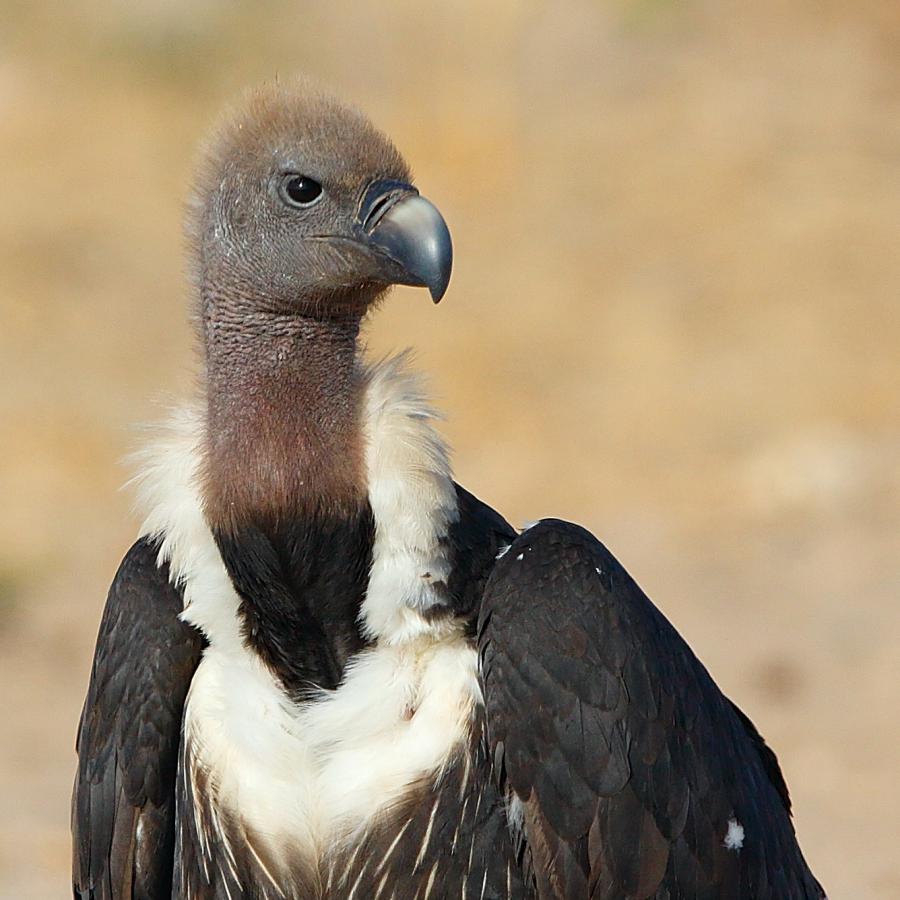
Most birds of prey will feed on live prey, however, Vultures are specialized ‘eaters of the dead’. Vultures will also eat scraps from human habitats. Flocks of Vultures can be observed soaring over the Savannas, searching for carcasses and sometimes following ungulates as they undertake their regular migrations. Vultures are carnivores and scavengers and feed mainly on carrion of freshly killed animals. White-backed Vulture Diet, Hunting and Feeding It also inhabits wooded country with game animals and livestock, up to 3,000 metres above sea level. The preferred habitats of the Vulture are deserts, savannas and grassland near a water source. Vultures also have a very well developed sense of smell which also helps them to find their food.

Vultures have incredible eyesight during the day which enables them to spot their prey while soaring through the sky, a Vulture can spot a large animal carcass from around 4 miles away on open grassland or savanna plains. The vulture also loves to rub its neck on rocks to clean. Ticks and Mites and other parasites will not stay on the neck of the Vulture for too long as the neck is exposed to the suns ultra violet rays to kill bacteria. The African White-backed Vulture lacks neck feathers which prevents it from becoming soiled when dipping into a carcass. Vultures have muscular legs, sharp talons and sharp bills. As these Vultures age, their plumage becomes paler and plainer, especially the females. Down feathers are present on its head and neck and it has a white neck ruff.Īs its name suggests, the back of this Vulture is white in color which contrasts with its dark plumage. Its wings are very broad and its tail feathers are short. It has a wingspan of 4 – 5.5 feet (1.2 – 1.7 metres). The White-backed Vulture is a medium sized bird which measures around 94 centimetres (37 inches) in length and weighs between 4 and 7 kilograms (9 – 16 pounds).

Use the information below to find out more about the White-backed Vulture’s characteristics, habitat, diet, behaviour and reproduction. They are collectively called Vultures because they are similar in appearance and they are believed to be connected through evolutionary status rather than DNA.Ī group of Vultures is known as a ‘venue’ and when the group is seen in the air, circling together, it is called a ‘kettle’. Old World and New World Vultures are not related. It ranges from Mauritania, east to Ethiopia and south through East Africa to South Africa.

There are 8 species of Vultures in Africa including the Hooded Vulture, Lappet-faced Vulture, White headed Vulture, Egyptian Vulture, Palmnut Vulture, Cape Griffon, Ruppel’s Griffon and White-backed Vulture.Īfrica’s White-backed Vulture (Gyps africanus) is an Old World Vulture who is closely related to the European Griffon (Gyps fulvus). There are around 30 different species of Vulture throughout the world except the continents of Antarctica and Oceania. There are two types of Vultures, the Old World Vultures who belong to the Accipitridae family along with Buzzards, Kites and Eagles who are found in Africa, Asia and Europe, and New World Vultures who belong to the Cathartidae family which also includes Condors who are found in the Americas. Vulturesare medium to large sized Raptors or birds of prey.


 0 kommentar(er)
0 kommentar(er)
